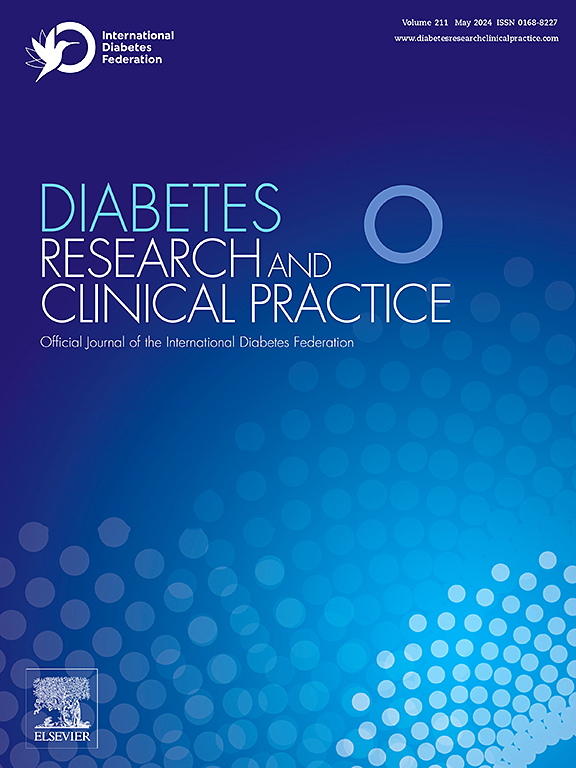角膜共聚焦显微镜识别早期和明确的糖尿病心脏自主神经病变
IF 6.1
3区 医学
Q1 ENDOCRINOLOGY & METABOLISM
引用次数: 0
摘要
目的:晚期心脏自主神经病变(CAN)与糖尿病患者死亡率增高相关。早期识别和减少危险因素可以限制can的进展。然而,早期CAN的诊断依赖于心脏自主反射测试(CART),这是不广泛使用。我们比较了角膜共聚焦显微镜(CCM)和CART在诊断CAN方面的诊断效用。研究设计与方法采用cart和CCM对238例1型和2型糖尿病患者和37例健康对照进行评估。结果随着CAN严重程度的增加,DB-HRV、E:I比、30:15比、角膜神经纤维密度(CNFD)、角膜神经分支密度(CNBD)和角膜神经纤维长度(CNFL)渐进式显著降低。CCM的受试者工作特征(ROC)曲线下面积(AUC)和敏感性/特异性与cart在识别早期和明确CAN方面相当。结论ccm是一种快速、无创的眼科检查方法,可用于早期确诊的CAN。本文章由计算机程序翻译,如有差异,请以英文原文为准。
Corneal confocal microscopy identifies early and definite diabetic cardiac autonomic neuropathy
Objective
Advanced cardiac autonomic neuropathy (CAN) is associated with increased mortality in people with diabetes. Early identification and reduction of risk factors can limit the progression of CAN. However, the diagnosis of early CAN relies on cardiac autonomic reflex testing (CART’s) which is not widely available. We have compared the diagnostic utility of corneal confocal microscopy (CCM) to CART’s in diagnosing CAN.
Research design and methods
Two-hundred and thirty eight individuals with type 1 and type 2 diabetes and thirty seven healthy controls were assessed using CARTs and CCM.
Results
There was a progressive and significant reduction in DB-HRV, E:I ratio, 30:15 ratio, corneal nerve fibre density (CNFD), corneal nerve branch density (CNBD) and corneal nerve fibre length (CNFL) with increasing severity of CAN. The receiver operating characteristic (ROC) area under the curve (AUC) and sensitivity/specificity of CCM were comparable to those of CARTs for identifying early and definite CAN.
Conclusion
CCM is a rapid, non-invasive ophthalmic test which could be used to detect early and established CAN.
求助全文
通过发布文献求助,成功后即可免费获取论文全文。
去求助
来源期刊

Diabetes research and clinical practice
医学-内分泌学与代谢
CiteScore
10.30
自引率
3.90%
发文量
862
审稿时长
32 days
期刊介绍:
Diabetes Research and Clinical Practice is an international journal for health-care providers and clinically oriented researchers that publishes high-quality original research articles and expert reviews in diabetes and related areas. The role of the journal is to provide a venue for dissemination of knowledge and discussion of topics related to diabetes clinical research and patient care. Topics of focus include translational science, genetics, immunology, nutrition, psychosocial research, epidemiology, prevention, socio-economic research, complications, new treatments, technologies and therapy.
 求助内容:
求助内容: 应助结果提醒方式:
应助结果提醒方式:


